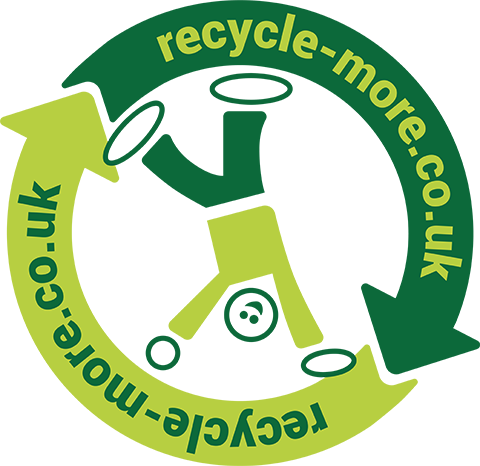
Environmental project ideas
Environmental projects ideas for schools
Are you a pupil looking to kick start an environmental project at school or with your friends? Or a teacher wanting to take the opportunity to inspire young minds?
The large quantity of household waste is mainly due to an increase in the amount of packaging over the last 40 years, and surprisingly food waste is a significant contributor to household waste. Other waste products, such as chemical waste which has a long lifespan (several thousand years), or industrial waste can pose serious health and pollution problems. We all need to think about the types of products we buy, how we use them and where we dispose of them, so we can dramatically reduce the amount of rubbish our homes produce. Waste, if not properly managed, can cause a change in the environment and its ecosystems. It can also pollute our rivers and oceans, having a deadly effect on wildlife. Although we produce waste, we do not want to have household waste incineration factories or landfill sites near our homes. However, waste is being produced at a much higher rate than it can be destroyed. Of all possible solutions, reduction at source is the quickest and most efficient way. However, it requires an effort to be made by governments, industry and consumers, which is not easy to put into practice, as changes to lifestyles and habits are necessary. We all need to do our bit by buying less and wasting less, and recycling items that cannot be reused or repurposed. Project ideas... Water pollution happens when our water sources become contaminated with harmful substances such as chemicals from industrial waste, fertilisers and sewage. The water becomes toxic, killing off plant life along our riverbanks and damaging ecosystems, which our wildlife needs to survive. Litter also has a major impact. If rubbish isn’t correctly disposed of, it can be washed down storm drains, eventually leading to rivers and the oceans. If washed out to sea, plastic litter could be ingested by animals causing them to choke. They could also become entangled, resulting in injury or even death. We rely on water, not only for drinking but also as a food source. So how would you feel about eating a fish that has ingested a compromised water supply? We must all realise what impact we have and what can we do to change it. Producing and consuming energy can impact our environment, causing issues such as air pollution, water pollution and it also contributes to climate
change. Fossil fuels are still the main contributor to the production of electricity, generating well over half of today’s global supply. We still use fossil fuels such as coal, oil, and natural gases. When these fossil fuels are burned, it releases a large amount of carbon dioxide, a greenhouse gas into the air. Greenhouse gases trap heat in the atmosphere, which causes global warming. Fossil fuels are a non-renewable source of energy that take millions of years to form, and cannot be replaced once they have been extracted and consumed, meaning there is limited time left. The use of energy from fossil fuels needs to be a thing of the past, and the growth of non polluting renewable energy sources should be made a priority. Renewable energy is collected from a resource that is naturally replenished, such as wind, sunlight, the movement of water and biomass. To coincide with these technological developments, the rising cost of fuel is encouraging people to be more economical with their daily energy consumption, which is a key factor in the success of an energy management action plan. Examples of the biggest energy wasting habits at home include: Project ideas... Eco-Schools is an official environmental education program run by Keep Britain Tidy and is accessible for all types of educational settings ranging from nurseries to colleges. The purpose of Eco-Schools is to engage and empower children and young adults, actively inspiring them to learn about the environment and create positive change to help protect it. To reach Green Flag status, your school will need to follow the same Seven Step structure every academic year. Start by selecting a group of young people within your setting who will be responsible for creating and running the Eco-Schools program, with the support of a co-ordinator. It is important to first complete a review of what your school may already be doing and to produce action plans to manage three chosen topics – which you can choose out of the following ten categories: Water The next step us to incorporate these three topics into the curriculum, covering various year groups. The eco group will need to communicate its plan of action to the school and community, monitor and assess the impact of the plan and note down what they can learn from it in future years. Finally, an Eco-Code will need to be established, with the entire school reflecting on what has been achieved and what it promises to do to protect the environment going forwards. If setting up and running an endorsed Eco-School is not currently feasible, why not put small plans in place to create your own. Select willing pupils from each year group to form an eco-committee. They can take responsibility for planning simple but effective changes to help make your school more sustainable and can help encourage young people to act and protect the environment. Here are a few examples of how this can be done: We
would love to hear what steps you have put in place to make your school eco-friendlier. Please get in touch if you would like us to share what you have manged to accomplish. If you have passion, excitement, location and time, setting up a Forest School is a perfect use of an outdoor space, where children can build confidence through play and can learn within natural surroundings. To obtain knowledge, skills and an understanding of setting up and running a Forest School you will need to research and complete the recommended training. This will allow you to recognise how your setting should look and what the ethos of your Forest school should be. This outdoor learning requires a long-term approach with regular sessions across more than one season. The leader can also link their Forest School experiences to school education and home life, with the aim to develop new skills and apply their learned experiences and solutions to new situations. Woodland, with its supply of natural resources and diversity, would be an ideal site to set up a Forest School. However, as woodlands aren’t widely available, you may also want to consider other natural areas, including school grounds, local grasslands, meadows, or costal areas. Research your area and where might be a suitable site. If grounds aren’t readily available to you, then contact landowners or your local authority. Even putting an advert in your local newsagents may entice landowners to want to share their space and allow others to have the same experiences they did during their childhood. Forest Schools inspire and provide the opportunity to allow children to grow and learn through creativity. The outdoor environment enables children to see change and use the various resources available. From a young age, it is good to learn and appreciate the importance of protecting the environment, habitats, and the earth’s finite resources. If there is an area within your school grounds that would be suitable to become a Forest School, but time and funding is scarce, consider planting trees and creating wildlife habitats here. Progress and findings can be documented and discussed as part of the schools’ daily lessons. A forest school area can also be used as a calm space to promote health and wellbeing, and to inspire young minds to think about how their actions can have a positive effect on the environment. Check out Forest Holidays' educational guide on how outdoor learning experiences can benefit children's development. If done well, every individual will take away something different from
Forest School. It will enable them to have agency to build relationships. To
commune with human and non-human, to have agency to find that connection from
within. Forest School is about connection, agency and communion.
Waste production reflects modern consumption and lifestyles. Household waste across the UK on average totals approximately 31 million tonnes each year. The average person in the UK throws away roughly 400kg of waste each year.

What problems and challenges can waste cause?
Water covers approximately 70% of the earth's surface, with oceans representing 96% of all the water in the world. Our waterways, such as rivers, lakes, canals etc. are becoming increasingly polluted, spelling disaster for aquatic ecosystems and making it unusable for drinking, cleaning and activities such as swimming.

What problems and challenges can pollution to water cause?
Project ideas...
We use energy as part of our everyday lives as it is essential for modern living. Charging electronics, cooking food, washing clothes, lighting, the list goes on!

Problems and challenges caused by energy
Earning your green flag status
Waste
Transport
School grounds
Marine life
Litter
Healthy living
Energy
Global citizenship
Biodiversity
Simple steps to make your school more environmentally friendly and sustainable
Forest Schools is an outdoor child focused learning programme, created in your local community’s natural environment.

What training is needed to become a Forest School leader?
What is the best location for a Forest School?
What are the benefits of a Forest School?






